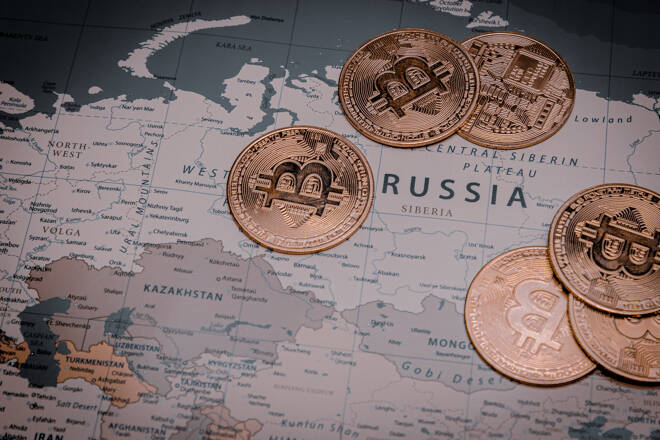Advertisement
Advertisement
Bank of Russia: Digital Ruble Is the Only Alternative to Private Stablecoins
Published: Jul 12, 2022, 15:52 GMT+00:00
Private stablecoins “are characterized by higher risks,” as the pool of assets that underly are not held by the owner, nor the price is virtually stable.
Key Insights:
- The Central Bank of Russia sees the digital ruble as the only alternative for private stablecoins.
- The bank has noted elevated risks of private stablecoins, including the lack of guarantee of redemption at par.
- Lack of regulation of cryptocurrencies might lead to destabilization of the industry.
Russia has been opposing private cryptocurrencies for years, stating that they would be vulnerable to money laundering or terrorism financing.
Although Russia gave them legal status in the year 2020, it banned their use as a means of payment.
An active discussion on regulating these asset classes and their circulation in Russia has been going on since last year. The country’s Ministry of Finance is now preparing its own version of a framework for “regulating the mechanisms of digital currencies circulation.” On the other hand, the central bank has criticized the Finance Ministry’s proposal of supporting stablecoins.
Digital ruble is the only alternative
The press service of the regulator, told local news TASS that private stablecoins that are backed by traditional assets such as oil and gold (XAU) are “characterized by higher risks.”
According to the unnamed representative from the bank, the digital ruble or a central bank digital currency (CBDC) is the only preferred alternative to private stablecoins. The spokesperson noted,
“The Russian ruble is the only legal payment means in Russia. The Bank of Russia considers digital ruble a preferred alternative to private stablecoins having all advantages of the digital payment means and the reliability of a full-fledged currency.”
In a fresh round of debate on Monday, the bank laid out elevated risks of stablecoins. Per the central bank, the underlying assets of these private stablecoins are “not held by the owner.” Additionally, there is no guarantee of redemption at par by the issuer, and the price of these stablecoins is also highly volatile.
The Ministry of Finance’s director of financial policy department Ivan Chebeskov said last week that the ministry had overall supported the possibility of stablecoin circulation in the country.
The Finance Ministry also called for regulations, noting that the complete lack of regulation of cryptocurrencies would lead to the destabilization of the industry.
About the Author
Sujha Sundararajanauthor
Sujha Sundararajan is a writer-journalist with 7+ years of experience in Blockchain, Cryptocurrency and in general, FinTech news reporting. Her articles have featured in multiple journals such as CoinDesk, Protos, Bitcoin Magazine, CCN, Asia Blockchain Review, BeInCrypto and EconoTimes to name a few. She holds a Master’s in Journalism from the Indian Institute of Journalism and New Media and is also an accomplished Indian classical singer.
Advertisement
